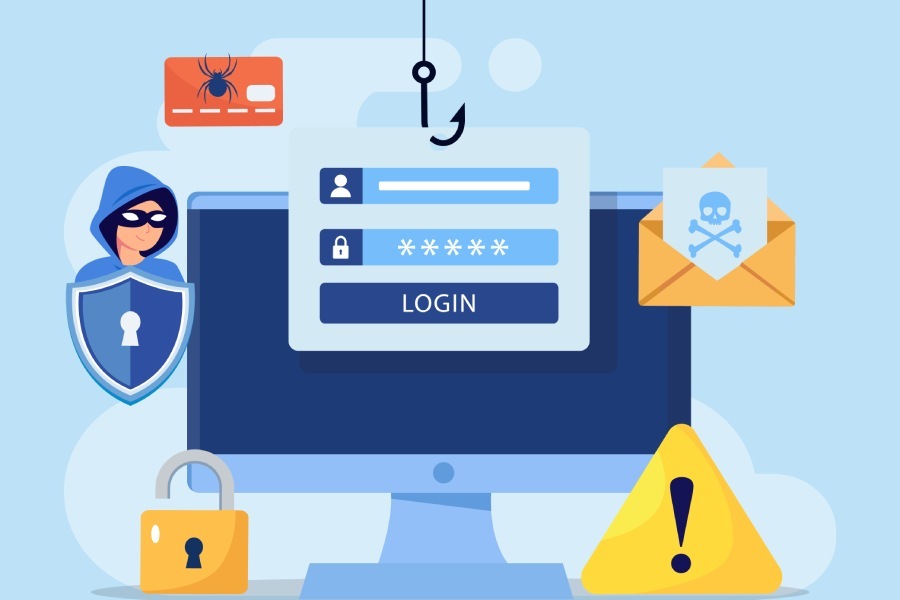How To Stop Spoofing Emails: Effective Security Techniques To Prevent Phishing
Email spoofing is becoming a common issue that many of us encounter, often masquerading as a trusted source to trick us into revealing sensitive information. Imagine opening your inbox only to find a message that looks like it’s from your bank, but it’s actually from a cybercriminal. Frustrating, right? Spoofing emails can lead to significant financial and personal harm if you’re not careful. Fortunately, there are effective techniques and strategies available to help protect ourselves and our organizations from these kinds of threats. One such solution is using a DMARC lookup tool to verify and monitor email authentication settings. In this article, we’ll explore practical ways to identify and prevent spoofed emails so you can navigate your digital communications safely.
To effectively stop spoofing emails, organizations should implement a combination of SPF (Sender Policy Framework), DKIM (DomainKeys Identified Mail), and DMARC (Domain-based Message Authentication, Reporting & Conformance). Additionally, regular employee training on recognizing phishing attempts and monitoring email traffic for unusual patterns can serve as essential layers of defense against such deceptive attacks.
Recognizing Spoofed Emails
One of the most telling signs of a spoofed email is an incorrect sender address. Legitimate businesses always use official domains for email communication. The subtle differences can be easy to overlook, but even minor variations can indicate that something is off. For example, an email claiming to be from Amazon might actually come from an address like “amazon.orders@secure-mail.com” instead of the trustworthy “amazon.com.” Your instincts should kick in if you spot such discrepancies, as they could signify a deceptive entrapment aimed at accessing your personal information.
Furthermore, we can’t overlook the language used in these emails. Often, scammers employ urgent or alarming phrases designed to create stress, pushing you to act hastily without fully considering the consequences. Phrases like “Immediate Action Required: Your account will be closed!” are classic tactics used to induce panic and encourage immediate responses without second thought. Take a moment to breathe and analyze the situation—if it seems too urgent, that’s usually your cue to proceed with caution.

Unexpected attachments or links are also red flags that you cannot ignore. A legitimate company won’t send unsolicited attachments out of the blue or request sensitive information through unusual links. If you receive an email that includes these elements and seems unrelated to anything you recently interacted with, it’s wise to refrain from clicking or downloading anything from that source.
Statistics indicate that around 80% of phishing attacks begin with emails according to data from the Anti-Phishing Working Group.
With this staggering figure in mind, being able to identify these signs can significantly reduce the risk of falling victim to email spoofing. Whether it’s scrutinizing sender addresses, recognizing menacing language, or being wary of unsolicited attachments—these skills pave the way for safer digital interactions. As we transition forward, let’s explore how specific protocols can further strengthen your defenses against these threats.
Using Anti-Spoofing Protocols
Anti-spoofing protocols are your first line of defense in the battle against email fraud. These frameworks work quietly behind the scenes, verifying that the emails you receive genuinely come from the people they claim to be from and not from malicious hackers seeking to exploit your information. When properly implemented, they create a robust safety net for organizations, significantly reducing the risk of falling victim to phishing attempts.
To begin with, let’s explore SPF (Sender Policy Framework). SPF allows domain owners to specify which IP addresses are authorized to send emails on their behalf. If an email comes from an IP not listed in the SPF record, the receiving server can flag or block it. This simple yet powerful mechanism can block around 70% of email spoofing attempts, providing a solid initial barrier against fraudulent communications.
However, SPF has its limitations, primarily because it only checks the source IP address and doesn’t verify the contents of the email itself. That brings us to our next protocol: DKIM (DomainKeys Identified Mail).
DKIM takes a step further by adding a cryptographic signature to each outgoing email. This signature is created using a private key known only to the sending server and verified by the recipient’s mail server using a public key stored in the sender’s DNS records. What makes DKIM so effective is its ability to ensure that the email content hasn’t been altered during transmission. When implemented correctly, DKIM boasts an effectiveness rate of approximately 90%, making it an indispensable tool in your anti-spoofing arsenal.

Now, while SPF and DKIM provide significant protection individually, combining them under DMARC (Domain-based Message Authentication, Reporting & Conformance) presents a more comprehensive strategy.
DMARC builds on the strengths of both SPF and DKIM by providing instructions to receiving servers on how to handle emails that fail authentication checks. For instance, if an email fails both SPF and DKIM validation, DMARC allows you to instruct the receiving server to reject or quarantine such messages. By doing so, DMARC achieves an effectiveness rate of up to 95% when all protocols work together synergistically.
It’s important not just to implement these protocols but also to monitor their performance regularly. Misconfigurations can leave gaps in your defenses that cybercriminals may exploit. A multi-layered approach—utilizing both advanced filtering systems along with employee training—enhances overall security measures significantly.
Integrating these anti-spoofing protocols into your organization’s email infrastructure is necessary for creating a potent barrier against increasingly complex phishing schemes. With this foundation laid, let’s consider how to effectively set up these essential protections.
Implementing SPF, DKIM, and DMARC
The process of setting up SPF, DKIM, and DMARC starts with taking charge of your domain’s settings. Think of these protocols as a fortress around your digital communication. Each component plays a crucial role in protecting against the ever-present threat of email spoofing.
Step I – Setting Up SPF
The first step involves creating an SPF record in your domain’s DNS settings. This record acts much like a list of trusted mail servers that are allowed to send emails on your behalf. When you make this declaration clear, it becomes more difficult for attackers to impersonate your domain.
Imagine this as putting up a sign that says, “Only these individuals can represent me.” Here’s how it works: when an email server receives a message claiming to be from your domain, it checks the SPF record to see if the sending server is authorized. If it’s not listed, there’s a good chance that the message is spam or perhaps even malicious.
Pro Tip: According to recent studies, domains equipped with SPF records saw a significant 70% decrease in spoofing incidents. Keeping your SPF record updated by including any new sending mail servers is vital for ongoing protection.
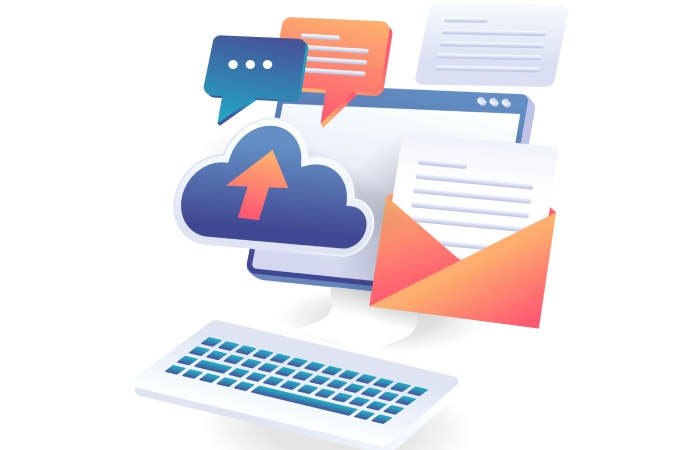
Step II – Configuring DKIM
Next comes DKIM or DomainKeys Identified Mail. This part might sound complex but think of it simply as a secret handshake between servers. You generate a pair of cryptographic keys—one private and one public. The public key is added to your domain’s DNS settings while the private key is used by your mail server to create a unique digital signature for each outgoing email.
When receivers get your email, their servers will use the public key to verify that the email hasn’t been modified during transit. This assures them that the email genuinely originates from you.
Insight: Organizations employing DKIM have reported up to a 60% drop in phishing incidents! Therefore, regularly reviewing and rotating your DKIM keys every six to twelve months can enhance your security even further.
Step III – Enforcing DMARC
Finally, DMARC combines and leverages both SPF and DKIM for an imposing fortress around your emails. By publishing a DMARC record in your DNS settings, you instruct receiving mail servers on how to handle emails that fail either the SPF or DKIM checks.
You can set policies such as “none,” which means do nothing about non-compliant emails; “quarantine,” which directs suspected emails to spam; or “reject,” which refuses delivery completely. Adopting the latter policy offers optimal defense against malicious emails pretending to come from you.
Take Note: Reports indicate that domains adopting DMARC policies experience nearly a 50% decrease in successful phishing attacks. Regularly monitoring DMARC reports will also help you identify unauthorized usage of your domain—a proactive way to adjust policies as needed.
Effectively implementing these frameworks establishes robust protection against spoofing attacks; however, cybersecurity is an ongoing endeavor that requires vigilance beyond just technical measures. Now let’s explore innovative strategies designed specifically to address evolving threats.
Leveraging Advanced Anti-Spoofing Technology
Advances in security technology offer robust tools that can significantly reduce the risk of falling victim to email spoofing. Among these tools, artificial intelligence (AI) and machine learning stand out as essential components for analyzing email behavior. These technologies meticulously scrutinize incoming emails, identifying patterns and anomalies that may indicate malicious intent.
By leveraging machine learning algorithms, systems can not only detect but also learn from suspicious behaviors over time.
One noteworthy example is Microsoft Office 365 Advanced Threat Protection, which is equipped with sophisticated machine learning capabilities. It continually monitors email patterns and flags irregularities based on vast datasets of legitimate and fraudulent emails. This results in a substantial decline in successful phishing attacks. Studies have shown that organizations utilizing such protective measures experience a significant reduction in security incidents, showcasing the efficacy of AI-driven tools.

While these advanced technologies do provide impressive defenses, it’s important to recognize their limitations. They are not infallible; there are always evolving techniques that scammers employ to circumvent detection mechanisms. However, these sophisticated defenses enhance resilience against spoofing attempts by adapting to new threats as they emerge.
As effective as these technologies can be, they should form part of a holistic security approach. A comprehensive strategy includes regular software updates and vigilant monitoring of email traffic to ensure maximum protection against evolving threats. Moreover, understanding how these systems work enables users to trust their judgments better when flagged emails come through.
It’s like having a heightened awareness; combining technology with education equips individuals with the information they need to make informed decisions.
Finally, there’s an often-overlooked aspect: training. Educating employees about spotting potential spoofing attempts is vital. Regular training sessions empower users by teaching them how to recognize red flags in suspicious emails, thereby reducing the likelihood of missteps even in cases where advanced technologies might fail.
To maximize your defenses against spoofing emails, pair advanced anti-spoofing technology with ongoing training initiatives and remain vigilant regarding all communications you receive. Adopting this comprehensive approach creates a fortress around your digital communication channels, significantly decreasing the odds of falling prey to deceptive scams.
Shifting our focus from technology, we turn to an equally crucial part of defense—equipping personnel with the knowledge needed to identify phishing threats effectively.
Employee Training to Prevent Phishing
Human error is an unfortunate reality when it comes to phishing attacks, making regular employee training programs crucial in the fight against spoofed emails. By educating staff members on the intricacies of phishing attempts, organizations empower their teams to recognize suspicious communications before they lead to significant breaches. Imagine the confidence employees could feel knowing they can spot a phishing email from a mile away—a skill that can save their company from devastating consequences.
Effective Training Programs
Effective training goes beyond simple presentations; it should engage employees and be interactive. Interactive workshops play a vital role in this process. By simulating real-world scenarios of phishing attacks, employees gain hands-on experience in identifying potential threats. This practical approach deepens their understanding and helps them learn how to respond appropriately, much like a fire drill prepares individuals for an emergency situation.
However, simulation isn’t enough on its own; continuous education is essential.
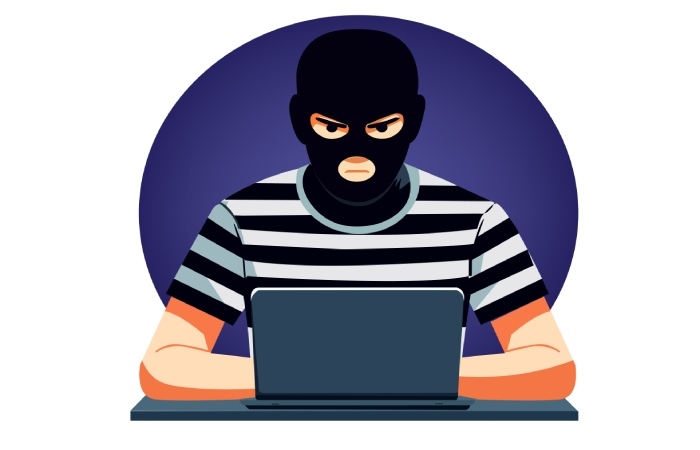
Keeping employees updated about the latest phishing techniques is paramount. Regular updates on emerging trends and tactics used by cybercriminals ensure that staff remains vigilant. Organizations can curate newsletters or host brief meetings that highlight recent phishing schemes so employees can stay aware and informed.
Finally, periodic testing provides insights into how well the training is sticking. By sending test phishing emails, companies can gauge employee awareness effectively. This approach not only identifies who might need additional coaching but also reinforces learning amongst all employees. After all, if we want our defenses to be strong, we have to get tested!
One medium-sized business saw a 65% reduction in successful phishing attempts after implementing comprehensive training sessions.
While these initiatives are powerful tools against spoofing attacks, it’s essential to remember that phishing methods continue to evolve rapidly.
The Need for Continuous Vigilance
Employees should understand that even with robust training programs, they must remain vigilant. Phishing isn’t static; it adapts as attackers refine their strategies. Creating a culture of awareness around cybersecurity ensures that each team member feels responsible for maintaining security standards within their organization. Encourage discussions regarding suspicious emails in team meetings or create channels for employees to report incidents anonymously.
Incorporating these elements into your employee training regimen can dramatically improve your organization’s resilience to spoofing attacks and strengthen its overall security posture against this pervasive issue.
As we explore further, it becomes clear that maintaining system integrity and monitoring usage play pivotal roles in safeguarding against such evolving threats.
Regular System Updates and Monitoring
Keeping your systems updated is not just a task on a checklist; it’s a fundamental cornerstone for maintaining robust email security. Think of your software as a living organism; without regular care and nourishment—like updates—it becomes susceptible to diseases, or in this case, hackers. It’s alarming to know that 60% of data breaches are linked to unpatched vulnerabilities, highlighting just how crucial it is for organizations to stay on top of software updates.
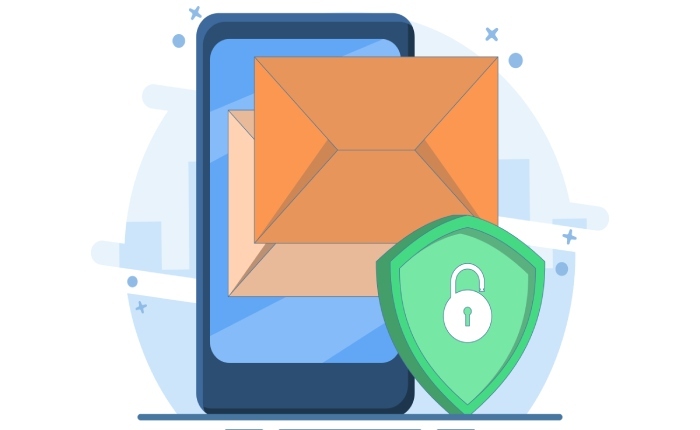
Routine Security Measures
Regularly updating your software can significantly reduce the chance of falling victim to an attack.
This means ensuring not only that your operating systems are current but also that all applications related to your email protocols are running the latest versions. An outdated email client can be a treasure trove for cybercriminals because they often exploit known vulnerabilities in older versions.
Therefore, an effective strategy includes:
- Patching Software: Upgrading your security software should be non-negotiable. Make it part of your organization’s culture to review software updates regularly. For instances where technology allows, automate these updates to free up time and avoid human error.
- Monitoring Systems: Intense scrutiny over your email traffic serves as an essential second line of defense. Using monitoring tools can help detect unusual patterns, such as high volumes of emails being sent or any anomalous login attempts from unexpected locations. Early detection means early intervention, which can prevent more severe fallout.
- Incident Response Plans: Even with proper updates in place, it’s prudent to prepare for disturbances by having an incident response plan at the ready. Regularly updating this plan ensures that everyone knows their role when things go awry, facilitating a quick and organized response should a breach attempt occur.
The value of timely detection cannot be overstated, particularly in today’s fast-paced digital environment where every second counts. By intercepting potential threats early on, organizations can save resources and protect the integrity of sensitive information.
When enhanced with employee training and proper authentication protocols, these ongoing maintenance practices create a holistic approach that fortifies your defenses against increasingly sophisticated threats. Following this, we will explore more comprehensive tactics that can further elevate security measures in the face of persistent challenges.
Comprehensive Email Security Strategies
Email security should be seen as more than just implementing isolated protective measures; it’s about integrating various components into a cohesive framework designed to combat ever-evolving cyber threats. When these elements are layered together, they create a defense that is multifaceted and robust, much like a shield protecting a castle from invaders.
Key Elements of a Comprehensive Strategy
One of the most effective tactics in this realm is layered security measures. Utilizing integrated tools such as firewalls, anti-virus software, and secure email gateways sets up multiple barriers against potential intrusions.
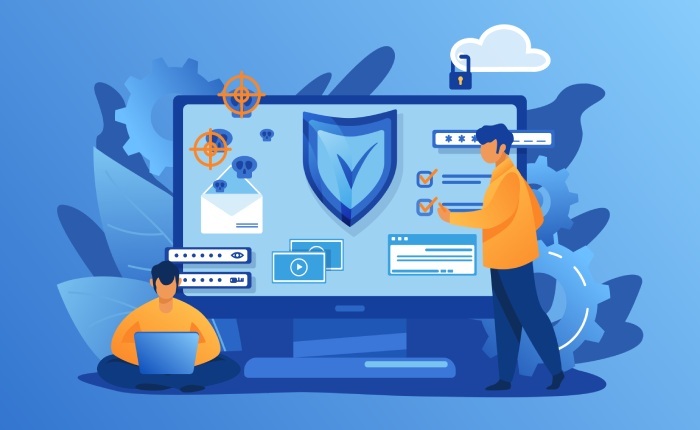
In addition to proprietary tools, employing protocols like SPF (Sender Policy Framework), DKIM (DomainKeys Identified Mail), and DMARC (Domain-based Message Authentication, Reporting & Conformance) ensures that emails are verified at every point of delivery. Such preventive strategies act as the outer walls of your fortress—fortifying your defenses against outside threats.
It’s not just about defending against attacks; it’s about being proactive in preventing them altogether.
However, just having these defenses in place isn’t enough; regular audits play a vital role in maintaining security integrity. Conducting periodic assessments allows you to pinpoint vulnerabilities and verify that existing measures work as intended.
Think of it as performing regular inspections on your fortress—if one area shows weakness or decay, timely intervention can prevent larger breaches down the line.
User Awareness
This brings us to one fundamental aspect often overlooked: fostering a culture of user awareness among employees. Training staff on potential phishing scams and suspicious email characteristics not only empowers them but also reinforces the strength of your fortress’ internal guards.
Regular workshops and training sessions will transform employees into vigilant custodians of security, capable of identifying and reporting threats proactively.
Just as knights need to be trained in defense tactics, employees should be continually educated on security best practices to remain responsive to common threats.
By weaving these comprehensive strategies together—layered defenses, regular audits, and user awareness—you not only bolster your email security measures but significantly mitigate the risks associated with email spoofing.
In an age where cyber threats loom larger than ever, taking these proactively disciplined steps can make all the difference in safeguarding your organizational communications.
In conclusion, effective email security combines technological solutions with a well-informed workforce dedicated to recognizing and eliminating potential threats.
What role does user awareness play in combating email spoofing?
User awareness is crucial in combating email spoofing, as it empowers individuals to recognize and respond to suspicious emails effectively. Studies show that nearly 91% of cyberattacks begin with a phishing email, highlighting the importance of educating users about identifying red flags such as unusual sender addresses or unexpected requests for sensitive information. By fostering a culture of vigilance and providing training on security best practices, organizations can significantly reduce their vulnerability to email spoofing and enhance overall cybersecurity defenses.
What steps should individuals take if they suspect they have been targeted by a spoofed email attack?
If you suspect you’ve been targeted by a spoofed email attack, promptly change your passwords for affected accounts, enable two-factor authentication where possible, and report the incident to your email provider and IT department if applicable. According to the Anti-Phishing Working Group, there were over 240,000 reported phishing attacks in 2022 alone, highlighting the importance of swift action. Additionally, scrutinize your financial statements for unauthorized transactions and consider monitoring your credit report to safeguard against identity theft.
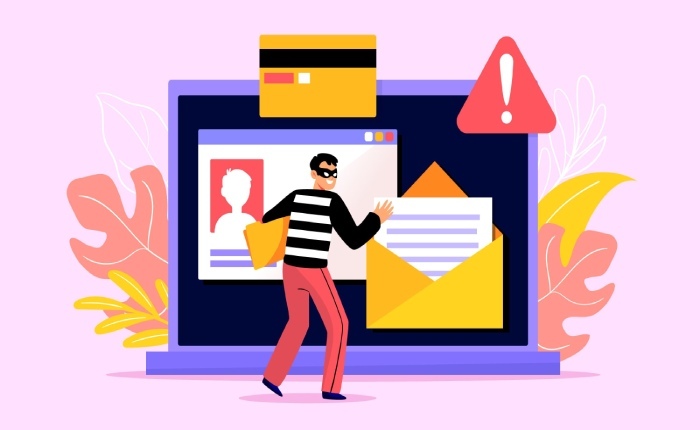
What are the most effective techniques for identifying spoofed emails?
The most effective techniques for identifying spoofed emails include checking the sender’s email address for discrepancies, hovering over links to see their real destinations, and analyzing the language used for signs of urgency or generic greetings. According to a report by the Anti-Phishing Working Group, 75% of all phishing emails are based on these tactics, emphasizing the need for individuals and organizations to remain vigilant. Implementing advanced email filtering and training employees on recognizing these signs can significantly reduce the risk of falling victim to such attacks.
How can organizations implement authentication methods (like SPF, DKIM, and DMARC) to prevent spoofing?
Organizations can implement authentication methods like SPF (Sender Policy Framework), DKIM (DomainKeys Identified Mail), and DMARC (Domain-based Message Authentication, Reporting, and Conformance) by first configuring their domain’s DNS records to specify which mail servers are authorized to send emails on their behalf (SPF), signing their outgoing messages to verify integrity and authenticity (DKIM), and setting policies for email handling based on the alignment of these methods (DMARC).
Research indicates that adopting these protocols can reduce phishing attacks by up to 90%, significantly enhancing email security and protecting both the organization and its customers from potential breaches.
Are there specific software tools or services that can help detect and mitigate email spoofing attempts?
Yes, there are specific software tools and services that can effectively detect and mitigate email spoofing attempts. Tools like DMARC (Domain-based Message Authentication, Reporting & Conformance), SPF (Sender Policy Framework), and DKIM (DomainKeys Identified Mail) are essential for authenticating emails and preventing spoofing.
According to a report from the Cybersecurity and Infrastructure Security Agency, organizations using these standards have seen up to a 50% reduction in phishing incidents. Additionally, services such as Cloudflare and Proofpoint provide advanced threat protection capabilities, further securing email communications against spoofing attacks.

